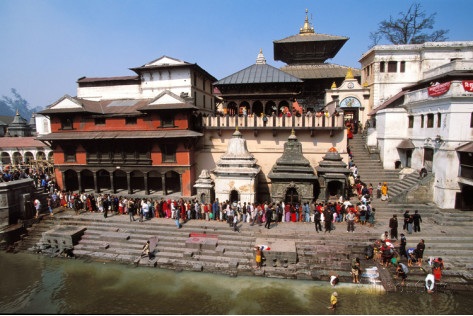Policy 2, Nepal: Clean Bagmati (सफा वागमती); Bagmati River Restoration Project.

The Bagmati River is the largest river in the capital city of Kathmandu Valley which comprises 57 rivers and rivulets as its tributaries. There are so many shrines and cemeteries located in its bank. Gokarneshwar, Guheshwari and Pashupatinath temples are famous shrines enlisted in the World Heritage which reflects its importance to all the races of human civilization. The river holds a special religious and spiritual value for both Hindus and Buddhists.
Since last decade it has been polluted due to human actions such as settlement along the river, unplanned urbanization in river basin and disposal of untreated sewage and solid waste into the river system. In addition, extractions of sand from river bed, construction of public infrastructure in river space, and illegal settlements of squatters along the banks have deteriorated the river environment and the water security in the citizen.
To keep the river and its tributaries clean by preventing the direct discharge of solid and liquid wastes to the river and to conserve the river system within the Kathmandu Government formed High level committee and approved Bagmati Action Plan in 2009, which is being implemented. Trunk sewer pipeline has been laid along both the banks of river. Treatment plants are on final stage of construction for treatment of sewer and wastewater. Treated water will be released back to the river to increase the volume of water. Moreover, river training work not only embarked the river but also gave ample space for green belt along the banks; which has been turned to Public Park. Various public campaigns are being conducted to bring awareness among mass about the importance of river. The project is expected to restore river by 2016.
Since last decade it has been polluted due to human actions such as settlement along the river, unplanned urbanization in river basin and disposal of untreated sewage and solid waste into the river system. In addition, extractions of sand from river bed, construction of public infrastructure in river space, and illegal settlements of squatters along the banks have deteriorated the river environment and the water security in the citizen.
To keep the river and its tributaries clean by preventing the direct discharge of solid and liquid wastes to the river and to conserve the river system within the Kathmandu Government formed High level committee and approved Bagmati Action Plan in 2009, which is being implemented. Trunk sewer pipeline has been laid along both the banks of river. Treatment plants are on final stage of construction for treatment of sewer and wastewater. Treated water will be released back to the river to increase the volume of water. Moreover, river training work not only embarked the river but also gave ample space for green belt along the banks; which has been turned to Public Park. Various public campaigns are being conducted to bring awareness among mass about the importance of river. The project is expected to restore river by 2016.